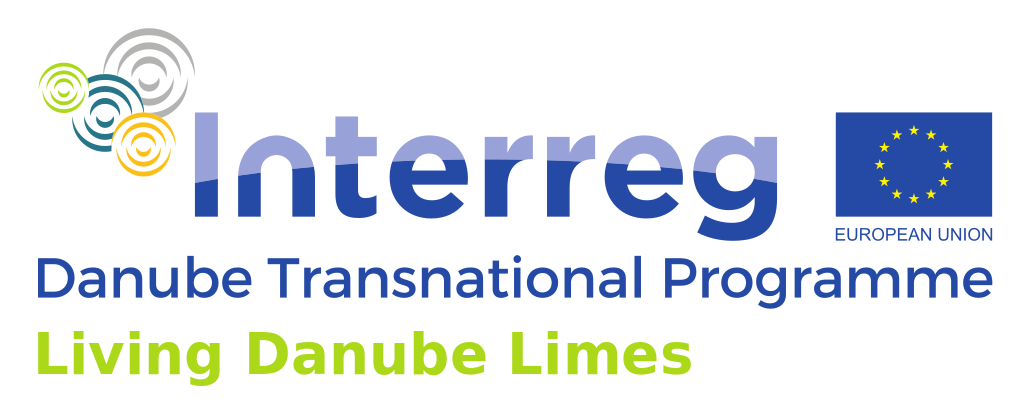
LIVING DANUBE LIMES PROJECT
How to make invisible – visible
Archeological Methodology and Presentation in the Digital era
Summer school Viminacium 2021 – Call for Application
Today we live in digital era. Life and technology advanced into something children of 20th century dreamed as Science fiction. Research, excavation, and presentation changed completely in just few decades. Satellites, drones, sensors, high accuracy positioning… Today, for us – researchers of the Danube limes, this is everyday life. Challenges of the Digital era influenced that science, so conservative in the main methodological approach turns into hi tech futuristic research concept. And guess what…. It never lost that romance and rush it had centuries ago.
Today when we start excavations, we already have insight through geophysics what we are facing below. Aerial and drone imagery with GIS made mapping precise and more detailed. Photogrammetry and 3D scanners introduced archaeological documentation ready for virtual world and presentation of cultural heritage went beyond dreams.
Join us this summer in the new vision of protection and presentation of cultural heritage.
On the behalf of the Institute of Archaeology, Belgrade, it is our pleasure to welcome you to participate in the upcoming Archaeological summer school at Viminacium. The summer school is part of the project “Living Danube Limes”, which fosters a common bond in the Danube Region via heritage shared by all Danube countries. The project is funded by the Interreg Danube Transnational Program.
The summer school is an exciting opportunity to learn about the use of different methods and new technologies in archaeology. The aim of the school is to get participants acquainted with full process of archaeological excavation, from prospection of the terrain, to different methods of documentation and processing finds. One of the main learning outcomes will be introduction to multidisciplinary research methods in archaeological practice, shown on the example of Viminacium.
First segment of the summer school will be, due to the COVID-19 pandemic situation, online Zoom video conference. Number of participants in virtual summer school is limited to 80. First Summer school online segment will be held 14-18 June 2021. Preliminary program is at the end of this document.
Second segment of the Summer school will be held at Viminacium Research and Visitors Center during September 2021. Second segment will be field school with workshops and field surveys with expert archaeological teams. Selection of participants due to limited number of places in our facilities will be processed out of participants of the Online Summer School in June.
The participants will learn about:
- Geophysical prospection of the terrain (Ground Penetrating Radar, Geomagnetic method)
- GIS and Aerial imagery
- Use of photogrammetry for documentation during and after excavations
- Processing of Roman pottery (analysis, methods of documentation, reconstruction and conservation)
- Anthropological methods of processing humane osteological material
- Presentation of Cultural Heritage and Virtual world of Archaeology
Preferred applicants are undergraduate students whose main interests are cultural heritage/Roman archaeology/Art History.
Participation is free of charge, but please keep in mind that the capacity is limited so please register in advance. To sign up for the summer school, please fill in the attached registration form and e-mail it to nemanjamrdjic@gmail.com. Only applications in English will be considered. The closing date for applications is the 10th of June 2021.
Documents and forms for download:
Program of the summer school 2021
Contact information:
| Nemanja Mrđić Institute of Archaeology Kneza Mihaila 35/IV Belgrade, Serbia +381606362652 nemanjamrdjic@gmail.com |
Milica Marjanović Institute of Archaeology Kneza Mihaila 35/IV Belgrade, Serbia milicamitic87@yahoo.com |
PROGRAMME OF VIRTUAL SUMMER SCHOOL
Viminacium Virtual Summer School
14–18th June 2021
Monday 14th June
09:00 – 09:15 – Welcome speech
09:15 – 10:00 – Frontiers of the Roman Empire as UNESCO World Heritage Cluster (Rebecca Jones, Historic Environment Scotland)
10:00 – 11:00 – Danube Limes as a World Heritage Site (Margareta Musilova, Municipal Monument Preservation Institute Bratislava, Nemanja Mrđić, Institute of Archaeology Belgrade)
11:00 – 11:30 – Coffee break
11:30 – 12:30 – Presenting the CLIR Database (https://clir.hu): a Collaboration Framework for Limes Research and Monitoring (Gergő István Farkas, CLIR Research Center)
12:30 – 14:00/14:30 – Viminacium Virtual Tour (Milica Marjanović, Ivana Kosanović, Nemanja Mrđić, Institute of Archaeology Belgrade)
Tuesday 15th June
09:00 – 09:15 – Welcome
09:15 – 10:00 – Roman Pottery, Production, Typology, Conservation (Ivana Ožanić Roguljić, Institute of Archaeology Zagreb, Angelina Raičković Savić, Institute of Archaeology Belgrade)
10:00 – 11:00 – Roman Pottery – Virtual Workshop (Ivana Ožanić Roguljić, Institute of Archaeology Zagreb, Angelina Raičković Savić, Institute of Archaeology Belgrade)
11:00 – 11:30 – Coffee break
11:30 – 12:30 – Anthropological Workshop – Research on Ancient Human Remains (Ilija Mikić, Institute of Archaeology Belgrade)
12:30 – 13:30 – Beyond the Gates of Hades – Burial Rites at Viminacium (Snežana Golubović, Institute of Archaeology Belgrade)
13:30 – 14:00 – Discussion
Wednesday 16th June
09:00 – 09:15 – Welcome
09:15 – 10:00 – Geophysics in Archaeology: Basic information (Nemanja Mrđić, Institute of Archaeology Belgrade)
10:00 – 11:00 – Large-scale Application of Geophysical Prospection Methods in Archaeology Geophysics – Magnetometer (Mario Wallner and Roland Filzwieser, Ludwig Boltzmann Institute for Archaeological Prospection and Virtual Archaeology)
11:00 – 11:30 – Coffee break
11:30 – 12:00 – Ground Penetrating Radar (Igor Milošević, Center for New Technologies)
12:00 – 12:30 – Survey methods in monument preservation and heritage studies. (Krisztina Fehér, BME, Department of History of Architecture and Monument Preservation)
12:30 – 13:00 – Data Processing (Igor Milošević, Center for New Technologies)
13:00 – 13:30 – Natural Sciences and Engineering in Architectural Conservation (Emilija Nikolić, Institute for Archaeology Belgrade)
13:30 – 14:00 – Discussion
Thursday 17th June
09:00 – 09:15 – Welcome
09:15 – 10:00 – Aerial Imagery in Archaeology (Nemanja Mrđić, Institute of Archaeology Belgrade)
10:00 – 11:00 – GIS in Archaeology (Nemanja Mrđić, Institute of Archaeology Belgrade)
11:00 – 11:30 – Coffee break
11:30 – 12:30 – Photogrammetry – 3D Modeling of Buildings and Features in the Field / Viminacium Legionary Fortress and Amphitheatre (Ivan Marjanović, Center for New Technologies)
12:30 – 13:00 – Photogrammetry – 3D Modeling of Pottery and Small Finds (Željko Jovanović, Center for New Technologies)
13:00 – 13:30 – Discovery of Viminacium Ships (Ilija Danković, Institute of Archaeology Belgrade)
13:30 – 14:00 – Development of Experimental Archaeology in Serbia (Milica Tapavički-Ilić, Institute of Archaeology Belgrade)
14:00 – 14:30 – Discussion
Friday 18th June
09:00 – 09:15 – Welcome
09:15 – 10:00 – Presentation of Cultural Heritage and Virtual World of Archaeology (Nemanja Mrđić, Institute of Archaeology Belgrade)
10:00 – 11:00 – Examples of Good Practice (Jelena Anđelković Grašar, Institute for Archaeology Belgrade)
11:00 – 11:30 – Coffee break
11:30 – 12:30 – TRAME Project – Presentation of Cultural Heritage for Future Education (Jelena Anđelković Grašar, Institute for Archaeology Belgrade)
12:30 – 13:30 – The methods of interpretation of Roman settlements (Zsuzsanna Emília Kiss, BME, Department of History of Architecture and Monument Preservation)
13:30 – 14:30 – Online workshops and practical work consultations
14:30 – 15:00 – Discussion and conclusions
